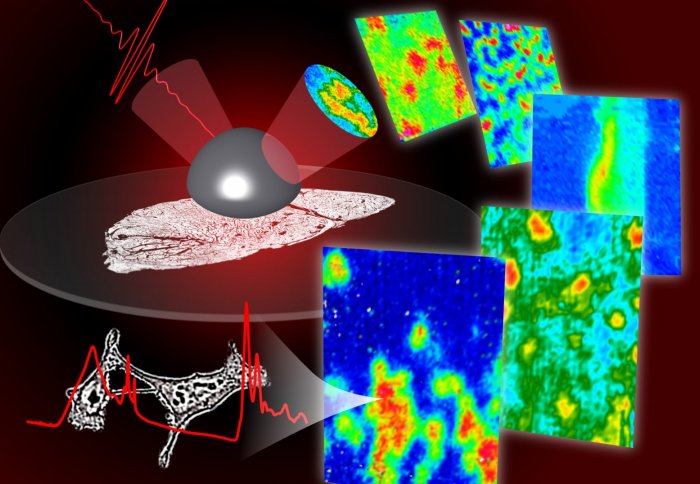Chemical Engineers examine new non-destructive cell imaging techniques

A new article in Chemical Society Reviews by Dr Andrew Chan & Prof. Sergei Kazarian represents a fundamental development in how we analyse live cells.
Over the past few years, the study of biological systems has become much more closely intertwined with chemical engineering as we deepen our understanding of the biochemistry of living cells.
Most of the current methods to analyse biological systems involve cell lysis, which destroys the sample. Once this process is complete, the cell lysate is analysed to determine the contents of the cell. Furthermore, conventional imaging methods require added dyes or labels but still do not provide complete chemical information about live cells, and therefore do not always reveal vital data required for more complex diagnostics.
Fourier Transform Infrared (FTIR) spectroscopic imaging provides a unique way to gather information about living cells by using low energy waves of light in the range of 4000-400 cm-1. Significantly, these do not harm the living cells through ionisation or bleaching. The absorption patterns - or spectra - obtained from this method are highly characteristic of particular molecular vibrations thus revealing a wealth of spatially resolved chemical information from the images.
The research group of Professor Sergei Kazarian from the Department of Chemical Engineering at Imperial College London, have been working on these methods of spectroscopy with a focus on FTIR spectroscopic imaging in Attenuated Total Reflection (ATR) mode which allows for a greater resolution and sharper spatial control. Professor Kazarian was awarded the Royal Society of Chemistry Sir George Stokes Award in 2015 for his work with ATR-FTIR spectroscopic imaging.
In their recent article entitled "Attenuated total reflection Fourier-transform infrared (ATR-FTIR) imaging of tissues and live cells", Dr Chan and Professor Kazarian highlight the possibilities of non-destructive spectroscopic methods to analyse chemical processes including cell division, sub-cellular reactions and cell differentiation, as well as medical applications such as the diffusion of drugs into tissues and live cells. The ultimate goal of such technologies would be to track the path of molecules within living cells without damaging the cell itself.
The review article was featured on the back cover of Issue 45 of Chemical Society Reviews and is part of a themed collection – Fundamental Developments in Clinical Infrared and Raman Spectroscopy.
Dr Andrew Chan is former member of Professor Kazarian's Vibrational spectroscopy and chemical imaging group and is now based at the Institute of Pharmaceutical Science, King's College London, UK.
Article text (excluding photos or graphics) © Imperial College London.
Photos and graphics subject to third party copyright used with permission or © Imperial College London.
Reporter
Michael Panagopulos
Department of Chemical Engineering